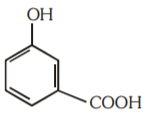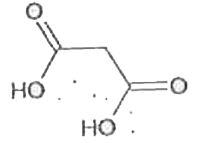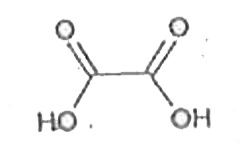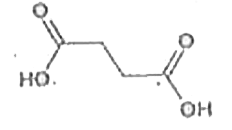Which of the following acid will form an (a) Anhydride on heating and
(b) Acid amide on strong heating with ammonia?




The correct Answer is:A
To solve the question, we need to identify which acid can form an anhydride upon heating and which can form an acid amide when heated with ammonia. Let's break down the solution step by step.
Step 1: Identify the Acid that Forms Anhydride
1. Understanding Anhydride Formation: An anhydride is formed when two carboxylic acid molecules lose a water molecule (H2O). This typically occurs when the acid has two carboxylic groups that can react with each other.
2. Analyzing the Options: Look for an acid that has two carboxylic acid groups (–COOH) in its structure. This will allow for the elimination of water and the formation of an anhydride bond (–C(=O)–O–C(=O)–).
3. Conclusion: The first option, which has a six-membered ring with two carboxylic acid groups, is likely to form an anhydride upon heating.
Step 2: Identify the Acid that Forms Acid Amide
1. Understanding Acid Amide Formation: An acid amide is formed when a carboxylic acid reacts with ammonia (NH3). The carboxylic acid loses a hydroxyl group (–OH) and ammonia provides an amine group (–NH2).
2. Heating with Ammonia: When the identified acid (from Step 1) is heated with ammonia, it will react to form an acid amide. The reaction involves the nucleophilic attack of ammonia on the carbonyl carbon of the acid or anhydride.
3. Conclusion: After the reaction, the resulting product will be an acid amide, and carbon dioxide (CO2) may be released during the reaction.
Final Answer
- (a) The acid that forms an anhydride on heating is the first option.
- (b) The same acid will also form an acid amide upon strong heating with ammonia.
1. Understanding Anhydride Formation: An anhydride is formed when two carboxylic acid molecules lose a water molecule (H2O). This typically occurs when the acid has two carboxylic groups that can react with each other.
2. Analyzing the Options: Look for an acid that has two carboxylic acid groups (–COOH) in its structure. This will allow for the elimination of water and the formation of an anhydride bond (–C(=O)–O–C(=O)–).
3. Conclusion: The first option, which has a six-membered ring with two carboxylic acid groups, is likely to form an anhydride upon heating.
1. Understanding Acid Amide Formation: An acid amide is formed when a carboxylic acid reacts with ammonia (NH3). The carboxylic acid loses a hydroxyl group (–OH) and ammonia provides an amine group (–NH2).
2. Heating with Ammonia: When the identified acid (from Step 1) is heated with ammonia, it will react to form an acid amide. The reaction involves the nucleophilic attack of ammonia on the carbonyl carbon of the acid or anhydride.
3. Conclusion: After the reaction, the resulting product will be an acid amide, and carbon dioxide (CO2) may be released during the reaction.
- (a) The acid that forms an anhydride on heating is the first option.
- (b) The same acid will also form an acid amide upon strong heating with ammonia.
Topper's Solved these Questions
Similar Questions
Knowledge Check
- Question 1 - Select One
Which of the following acid will form an (a) Anhydride on heating and
(b) Acid amide on strong heating with ammonia?A B
B C
C D
D
- Question 2 - Select One
Which of the following can form an anhydride on heating ?
A B
B C
C D
D
- Question 3 - Select One
Which of the following acids does not form anhydride?
AFormic acidBacetic acidCPropionic acidDn-butyric acid
Which of the following on heating does not form an anhydride?
View SolutionWhich of the following on heating does not form an anhydride ?
View SolutionWhich of the following is an example of acid anhydride?
View SolutionWhich of the following ammonium salt will not give acid on heating?
View SolutionWhich of the following compounds on heating form anhydride?
View Solution

